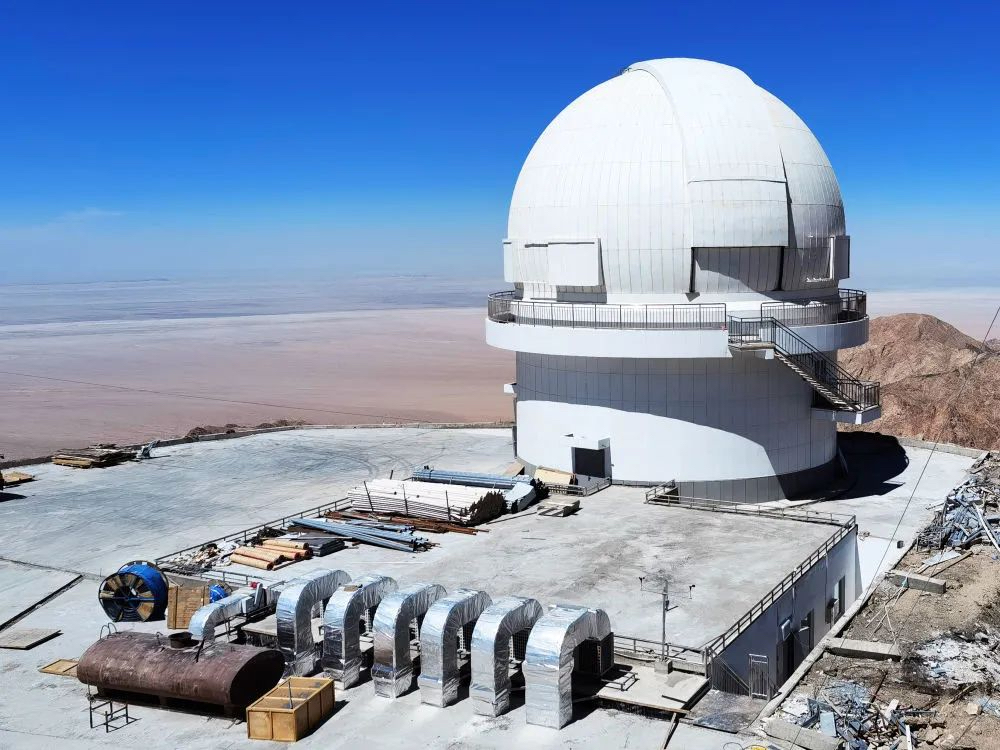By SONG Jianlan

The newly launched Wide Field Survey Telescope (WFST), nick-named Micius survey telescope, releases its first-light image, a portrait of the Andromeda galaxy. (Image by USTC/PMO)
The new Wide Field Survey Telescope (WFST), located on the summit of Saishiteng Mountain, Lenghu Town, Qinghai Province of China, officially went into operation on September 17th, and released its first-light image – a portrait of the Andromeda galaxy, an object 2.5 million light years away from the Earth. Capable of surveying the whole northern sky in just three days, the 2.5-meter-aperture WFST now ranks the largest optical time-domain survey facility in the northern hemisphere.
Labeled as M31 by astronomers, the Andromeda galaxy is the largest spiral galaxy close to our home galaxy, the Milky Way. It is similar to the Milky Way in terms of structure and also abundance of the constituent metal elements, therefore has been an ideal object for studies in the formation and evolution of kindred galaxies.
The Andromeda galaxy, however, spreads a wide span across the sky, and is therefore very time-consuming for traditional survey instruments to obtain an accurate full view together with its surrounding environment in great details.
Nick-named after Micius, a philosopher of ancient China who is believed to be the first to perform an optical experiment, the new wide-field surveyor just comes to fill the gap. With an advanced prime-focus optical system powered by active optics and a 765-million-pixel large-target-surface mosaic CCD camera, designed and developed by WFST collaboration, it has a wide field of view and an excellent high-resolution imaging ability. The Micius survey telescope obtained multi-color images of the galaxy as well as its surrounding areas, giving the nuances of the target ranging from the brightest nucleus region of the galaxy to the dim twilight of the ambient gases. This set of data will help scientists depict the dynamic processes inside and beyond the galaxy, so as to reconstruct the interactions between the galaxy and its environment.

Ranked the largest optical time-domain survey telescope in the northern hemisphere, the new Micius survey telescope is strong at wide-field high-resolution optical imaging. (Image by USTC/PMO)
The released portrait of the Andromeda galaxy has resulted from the stacking of 150 images taken on different nights. These contributing images, recording the luminance variances across the galaxy and its surrounding environment, will benefit related research in time-domain astronomy. In addition, they will offer clues about the formation and evolution of the involved stars and their interactions with the ambient gases.
Niched in the mountains of northwestern China, the new facility is situated at an altitude of about 4,200 meters above sea level. The site, named Lenghu Astronomical Observation Base, boasts world-class astronomical seeing, and the Micius survey telescope has become the first large-scale instrument in the base to run into official operation.

The Micius survey telescope seen from a distance. (Image by USTC/PMO)
The new telescope is jointly developed, funded and supported by the University of Science and Technology of China (USTC) and the Purple Mountain Observatory (PMO) under the umbrella of the Chinese Academy of Sciences, in conjunction with the Deep Space Exploration Lab and Haixi Prefecture People’s Government of Qinghai Province. Its operation is anticipated to help strengthen the country’s capacity of optical sky survey and facilitate the time-domain astronomical research.

